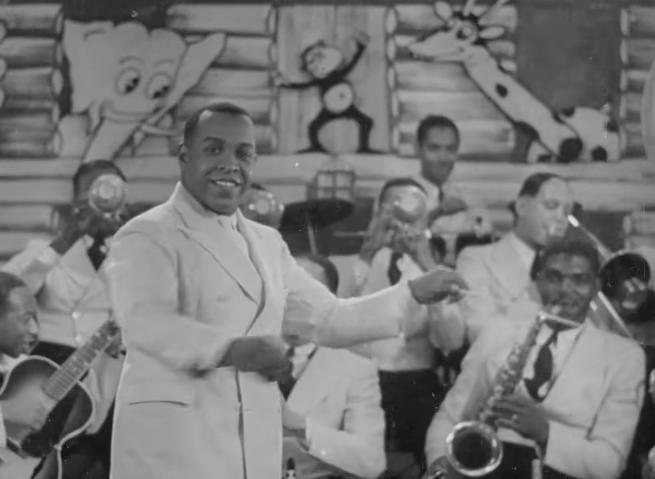
Fletcher Henderson

Fletcher Henderson
Fletcher Henderson (1897-1952) grew up in a middle-class Black family in southern Georgia. His mother, a piano teacher, instilled in him an appreciation of classical music, but Henderson never considered music a career. Instead, he graduated from Atlanta University with a degree in chemistry and then moved to New York in 1920. Henderson wound up working as a song demonstrator for one of New York's earliest Black-owned music publishing companies almost serendipitously. When one of the owners, Harry Pace, founded the first Black recording company, he enlisted Henderson to serve a host of musical duties. Ultimately, this led him into the role of band director for the company's various recordings. Before long, Henderson had put together his band to perform outside the studio.
Henderson was a pioneer in the emerging jazz style that would come to be known as swing, and his arrangements-or charts-provided the model for most of the bands that would come to prominence in the latter half of the 1930s.
Henderson's charts divided the band into three sections:
- Reeds (reed section): alto, tenor, and baritone saxophones and clarinet
- Brass (brass section): trumpets and trombones
- Rhythm (rhythm section): piano, guitar, double bass, and drums
He would pit the reeds against the brass in a call-and-response that later became a hallmark of the big-band style. This back-and-forth between sections can also be labeled antiphonal counterpoint.
Don Redman (1900-1964) was a conservatory-trained saxophonist/composer who Fletcher Henderson hired, and he is mainly responsible for much of Henderson's early big band success. Redman's arrangements not only heightened the distinction between written and improvised sections, but they also made skillful use of the contrasts between reeds and brass. This innovation made Henderson's orchestra famous. He was also among the first to develop the voicing-across-sections technique, where players are drawn from the various sections to play a line together. Duke Ellington adopted and further developed this technique of voicing across sections.
One of Fletcher Henderson's early hits was his composition "The Stampede" , arranged by Don Redman. This composition was early New York jazz, not hiding its debt to the New Orleans style, but leading the way toward the big band sound that would evolve in the next decade.
Notice the arrangement in the opening chorus. Jelly Roll Morton had worked out similar ideas, but this arrangement features a more homogenous blending of horns in many passages. Coleman Hawkins takes the solo in the second chorus (0:50-1:23). Here, he is pioneering the tenor saxophone "voice," a newcomer to the jazz band. Fletcher Henderson, for his part, has ample opportunity to demonstrate his piano acumen in passages of call-and-response, and we hear the strong influence of New York's "Father of Stride," James P. Johnson (Carolina Shout).
Don't Worry 'Bout Me
Don't worry 'bout me Forget about me
Just be happy my love
A-Tisket A-Tasket
A-tisket a-tasket
A green-and-yellow basket
I bought a basket for my mommie
On the way I dropped it






